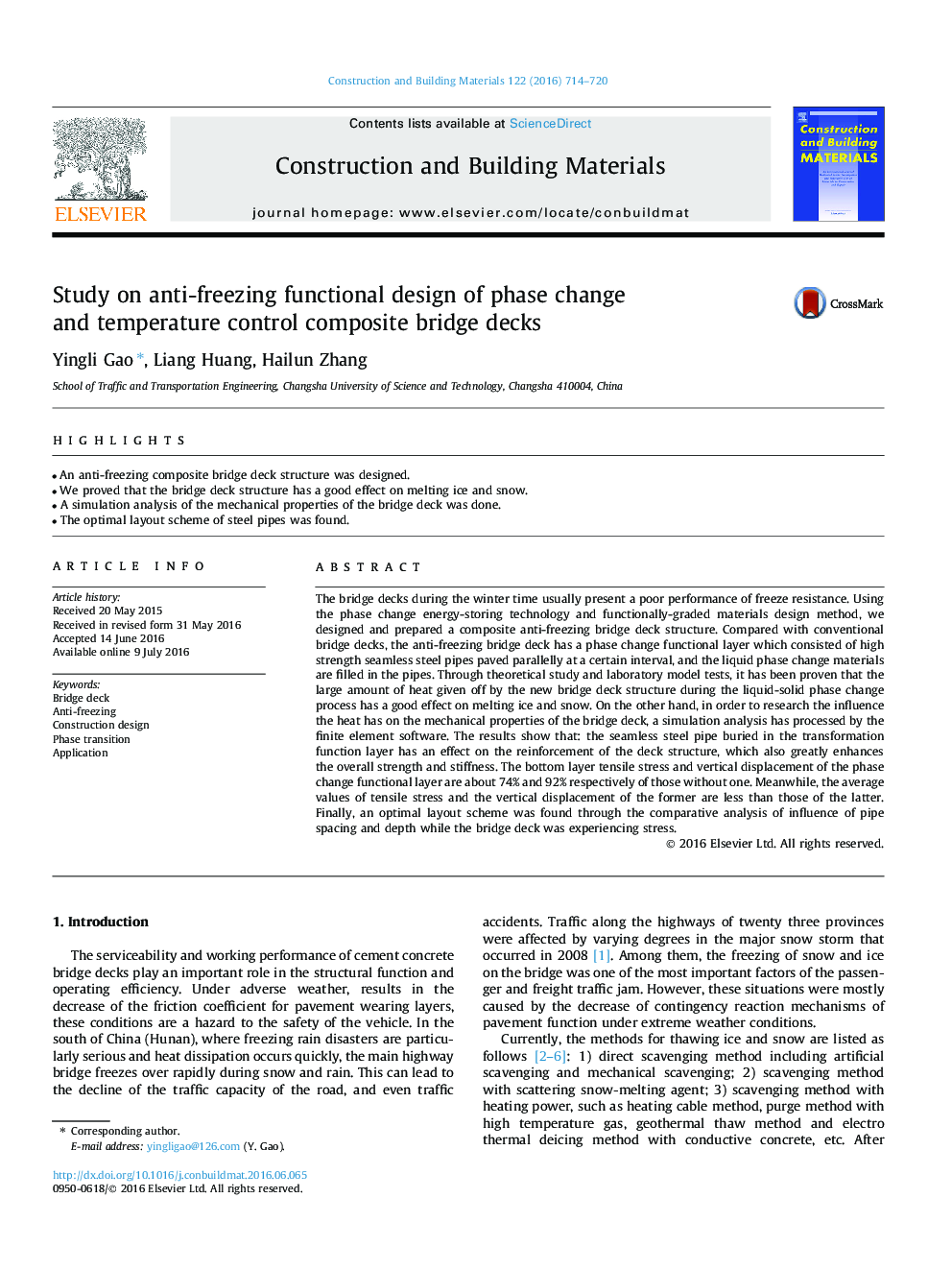| Article ID | Journal | Published Year | Pages | File Type |
|---|---|---|---|---|
| 6718391 | Construction and Building Materials | 2016 | 7 Pages |
Abstract
The bridge decks during the winter time usually present a poor performance of freeze resistance. Using the phase change energy-storing technology and functionally-graded materials design method, we designed and prepared a composite anti-freezing bridge deck structure. Compared with conventional bridge decks, the anti-freezing bridge deck has a phase change functional layer which consisted of high strength seamless steel pipes paved parallelly at a certain interval, and the liquid phase change materials are filled in the pipes. Through theoretical study and laboratory model tests, it has been proven that the large amount of heat given off by the new bridge deck structure during the liquid-solid phase change process has a good effect on melting ice and snow. On the other hand, in order to research the influence the heat has on the mechanical properties of the bridge deck, a simulation analysis has processed by the finite element software. The results show that: the seamless steel pipe buried in the transformation function layer has an effect on the reinforcement of the deck structure, which also greatly enhances the overall strength and stiffness. The bottom layer tensile stress and vertical displacement of the phase change functional layer are about 74% and 92% respectively of those without one. Meanwhile, the average values of tensile stress and the vertical displacement of the former are less than those of the latter. Finally, an optimal layout scheme was found through the comparative analysis of influence of pipe spacing and depth while the bridge deck was experiencing stress.
Related Topics
Physical Sciences and Engineering
Engineering
Civil and Structural Engineering
Authors
Yingli Gao, Liang Huang, Hailun Zhang,
